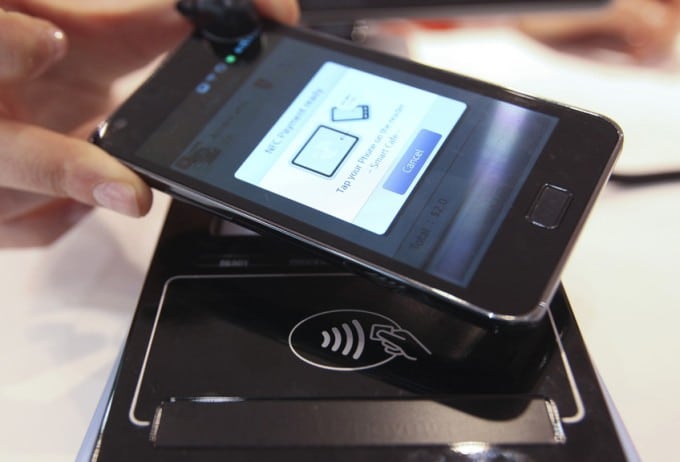NFC still has a trust gap for payments

This coming April, all major American credit card companies will become signature-optional, meaning merchants won’t need to require users to provide a signature in order to complete a credit card purchase.
The move is hardly a radical change, but is a signal that the U.S. is catching up to the U.K. and Canada when it comes to payments technology. As we look to the future of U.S. payments, the following trends provide a glimpse into the momentum we should continue to expect within the industry.
When the U.K. made the switch to EMV, contactless payments exploded. This was due in part to a rollout of uniform credit card terminals, all of which had NFC, the technology necessary to conduct contactless payments. As the length of EMV chip transactions became a pain point for consumers, the ease and speed of contactless transactions eclipsed the chip technology as a quick, painless alternative.
 Image: Bloomberg News
Image: Bloomberg NewsIn the U.S., the rollout of EMV was far less uniform. Many merchants were reluctant at first to even begin accepting the chip cards, much less begin accepting NFC transactions. Because of this reluctance to adopt and the availability of a variety of credit card terminals, some of which included NFC, some of which did not, contactless payment has lagged in the U.S.
In addition, the largest reason why NFC is not widely used in the U.S. is because credit cards do not have NFC chips in them, unlike in other countries where cards are issued with the NFC chip.
As a result of the all of these factors, American consumers have been hesitant to use the technology, fearing that it would hold up checkout lines or their payments would be rejected. To see significant growth in NFC payments in the U.S. a movement to standardize terminals across merchants would be necessary, coupled with a willingness from consumers to test, trust and use the technology.
The growing adoption of EMV and the signature-optional movement will allow merchants to rethink their payments process, and reinvest capital that previously would have been used to store signatures.
Being freed from the traditional checkout counter leaves room for merchants to innovate with new payments technologies. Quick service restaurants have led the way in this sector with the growth of ordering and pay at the table kiosks.
But the possibilities aren’t just limited to kiosks, with mobile payments terminals a boutique could free up valuable store real estate by removing the cash register terminals and arming sales associates with personal payment devices. Or, consider the healthcare industry: what if patients could pay in their exam rooms or at their bedside, reducing the time of these transactions and speeding up discharges?
The possibilities with payment at point of service not only present an opportunity for merchants to reinvest assets previously tied up in old systems, but provide consumers with a more painless payment experience.
Contactless payments ISO and agent Mobile payments NFC Retailers

